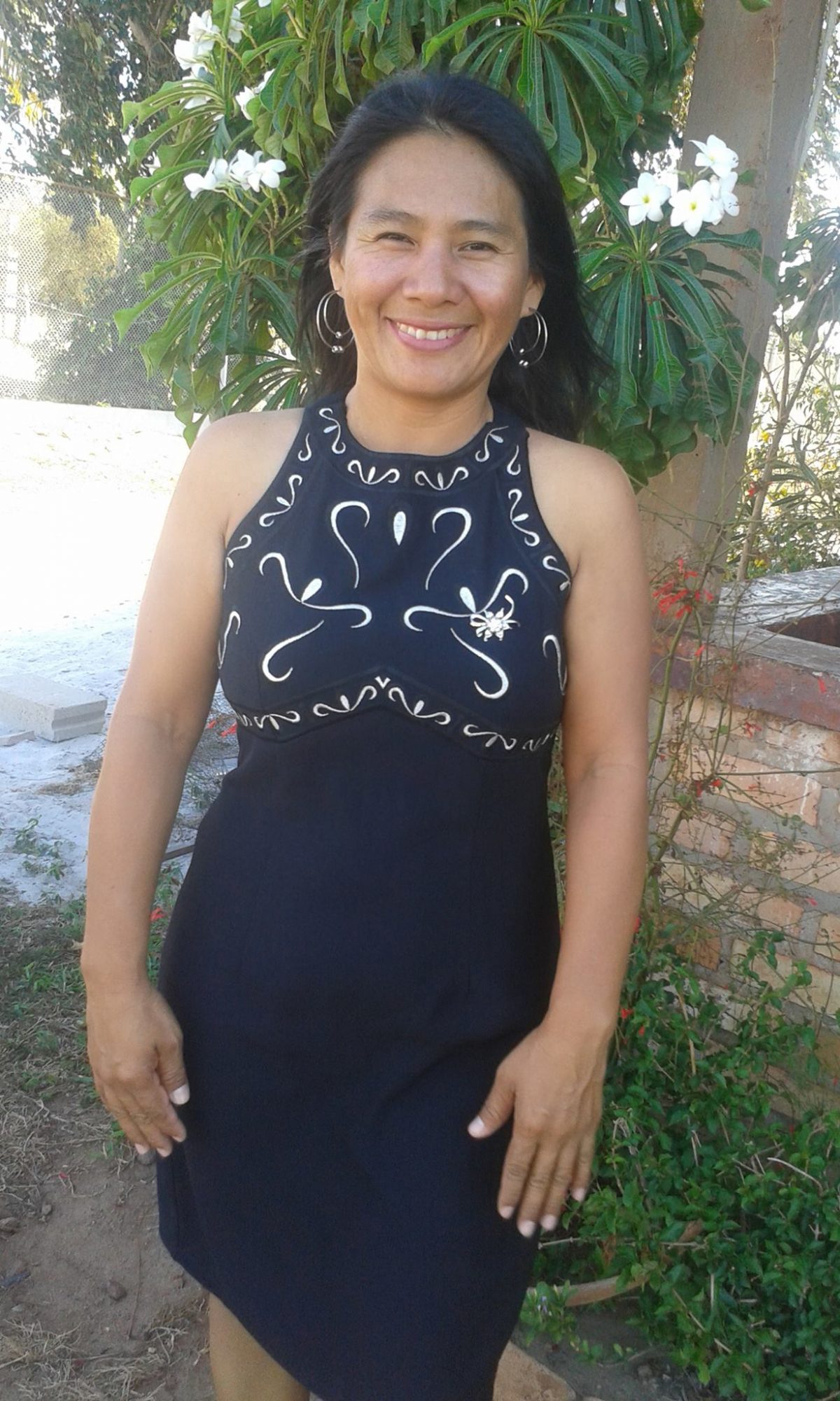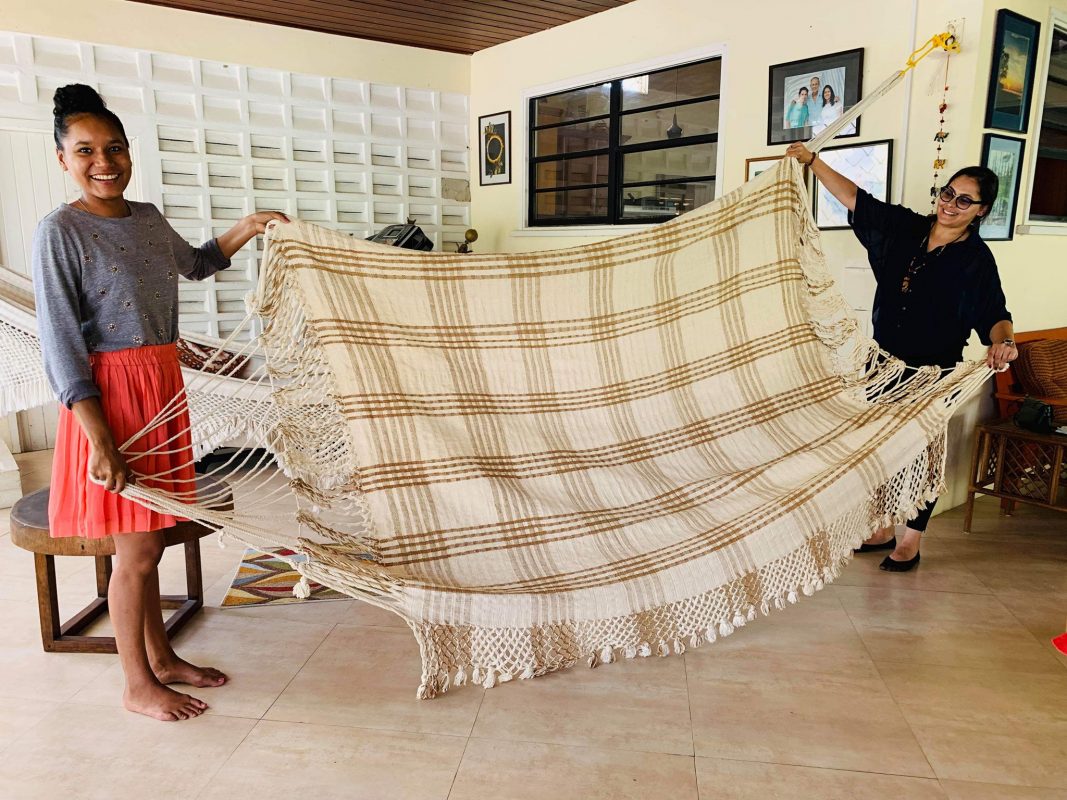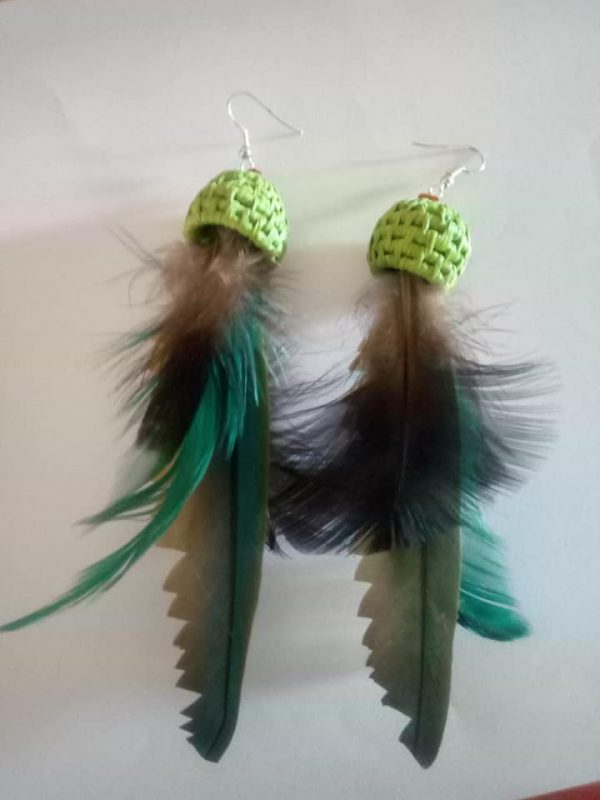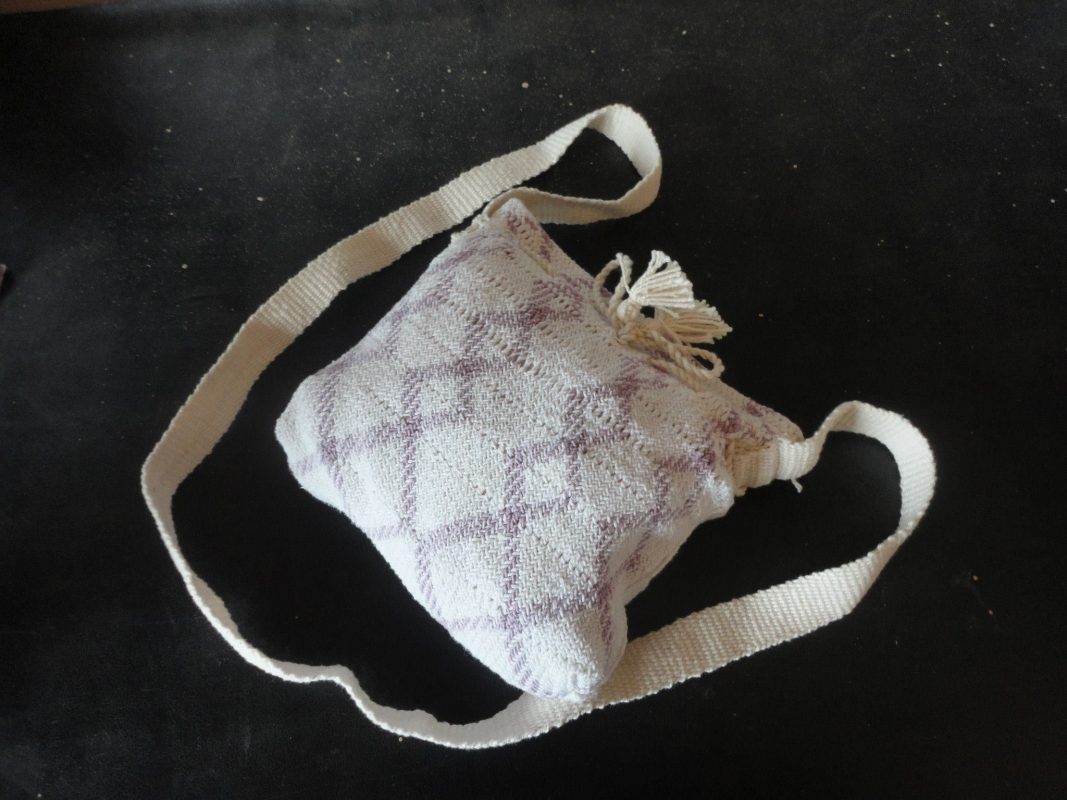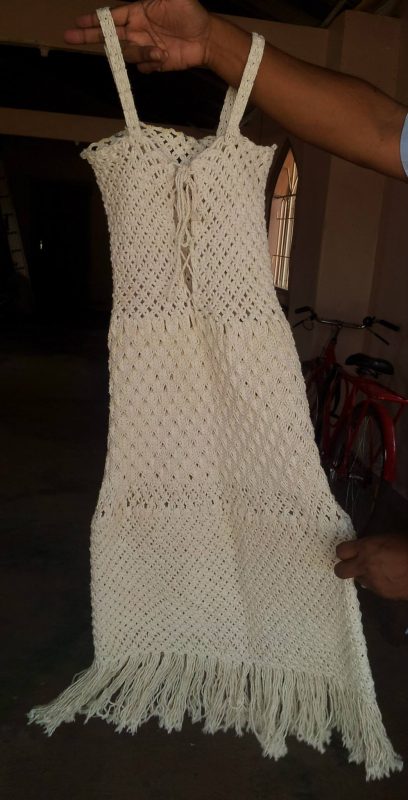
Kabaun is a Wapishan word that means how.
The business, which is located at Culvert City, Lethem, sells jewellery, dream catchers, baby slings, balata figurines and woven bags, dresses and pillows, among other things. It is particularly known for its exquisitely handmade hammocks, which are woven by Hernandez’s 65-year-old mother, who uses a double-weave design. The making of double-weave hammocks is an ancient art, said to only be practiced by the Wapishana tribe living along the Kanuku Mountains in the South Rupununi Savannahs.
There is a story behind this hammock creation. Hernandez shared that according to what has been passed down through generations, the hammock started out as a gift given to a prospective husband by his wife to be. “In the tribe, if you couldn’t make a hammock, you weren’t wife material because then it would mean that you couldn’t provide the [comfort] for your husband, and your future children and they all would have to sleep on the ground without hammocks,” she related. She added that it was not only women who had to learn the skill of weaving but prospective husbands, too, as they were expected to weave warashis (baskets) and matapees (for squeezing poisonous juices from the cassava root) as if they could not, their families might go hungry.
Today, Hernandez said, the making of the double-weave hammock is a dying tradition. It takes about a month to complete one and young people are not interested in learning the skill. Mass produced hammocks are popular. “Today when you buy a hammock like this, you’re not only buying a hammock, you’re buying a dying art,” she said.
“There is the single-weave hammocks and another kind of weave called plato where the [strands] are more spaced out. On one side it is smooth as wool which is the side you sleep in; the other side is rough. It cushions you. It’s thick and mosquitoes don’t bite through it because the material is mosquito repellent. A large hammock can hold a family of four,” Hernandez shared. She added that bed sheets can also be double woven.
According to Hernandez, a double-weave hammock was purchased from the Rupununi Weavers Society for display at the Smithsonian National Museum of Natural History in Washington DC.
Hernandez’s mother, who has always been an artisan, started during her school days when she was just eight and learned the art of double weaving hammocks from her grandmother.
Hernandez said craft making has always been part of her life and as she became more interested in the skill, she joined the Rupununi Weavers Society in 1998 for a year and a half. Later, she journeyed to Georgetown where she lived for a decade. For eight of those years, she worked at Liana Cane Furniture, where she learnt the importance of providing quality pieces. She dealt with invoices for local and international sales, adding to her attributes for later when she founded her own business.
While her mother weaves the hammocks, Hernandez makes the other items using cotton, buck beads, seeds, macaw feathers and tibisiri. All of her jewelry is made of recycled or upcycled materials.
“One of my best customers is the former president, Mr David Granger. He wasn’t yet president when he started buying from me. He was very particular about his pieces and colours. He is a really cool person,” she shared.
Creating quality products is one of the main objectives of Crafts Kabaun Designs. Hernandez said her customers know how important it is to her that she puts out the best. As it relates to the hammocks, she said she has had customers request them hoping they were already made. When told that they would have to wait for the item to be made, they usually have no problem doing so. Other businesses have bought some of pieces for resale, she said, and they often commend her on the quality of her products.
Hernandez said, too, that she would sometimes find her original designs copied by others, especially those who had been trained by her and her mother, but she does not mind too much and sees it as a challenge. Despite the copycats, Crafts Kabaun Designs is still much sought after. As it relates to why her business continues to thrive, she said, “I have to always keep making different pieces. You have to always be innovative.”
Though her business has been around for five years, Hernandez has operated it on a part-time basis while she works with the Department of Education, which has contracted her as a Craft Production Design Officer. She hopes to start operating her business fulltime soon.
Her business, she said, was tremendously affected by COVID-19 last year as a lot of her customers are foreign visitors. However, since then, more locals have shown interest and though she is not sure of the exact reason for this, she is excited that Guyanese are attracted to local craft. Recently, also, she was contacted by someone local who placed an order for someone living overseas.
At present, the entrepreneur is looking to broaden her horizons in the business and is taking Information Technology and garment construction classes. She is also back with the Rupununi Weavers Society and is currently on the board. The group is hoping to train persons interested in learning to make the double-weave hammocks, and this is open to both indigenous and non-indigenous individuals.
Orders can be placed on the business’s Facebook page at Indigenous Crafts Guyana or by calling Hernandez on 663-4038.
